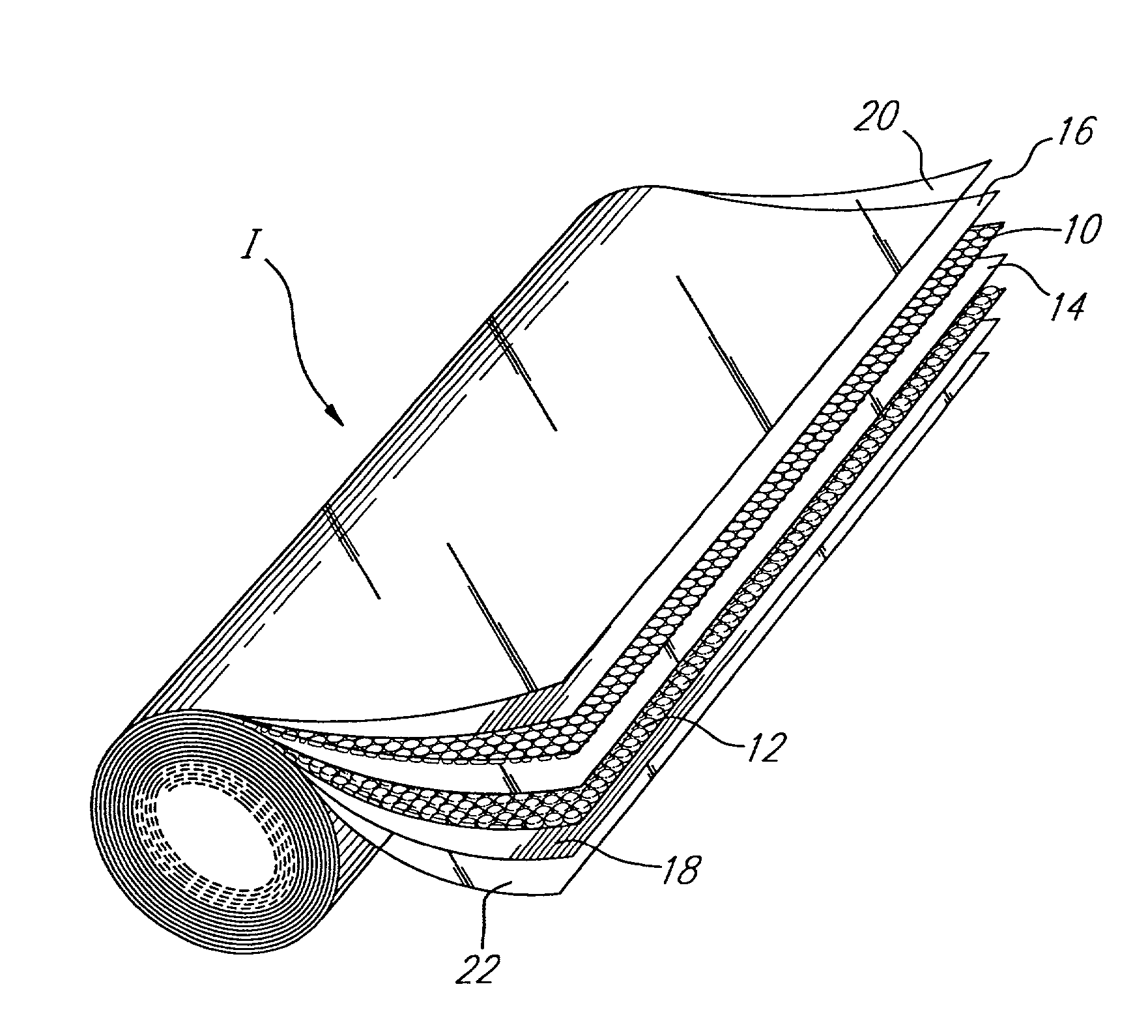Low emissivity, high reflectivity insulation
a high reflectivity, low emissivity technology, applied in thermal insulation, heat exchange apparatus, lamination, etc., can solve the problem that the performance of thermal conductivity measurement in the laboratory in the completely dry state cannot match the performance of the same insulation under actual field conditions, and the difference in the rate of radiation flow between these two objects is not uniform, so as to reduce thermal losses
- Summary
- Abstract
- Description
- Claims
- Application Information
AI Technical Summary
Benefits of technology
Problems solved by technology
Method used
Image
Examples
Embodiment Construction
[0045] In accordance with the present invention, FIG. 1 illustrates a roll of flexible insulation I comprising a series of layers which include first and second layers 10 and 12 made of multicellular plastic film (i.e. closed cell air bubbles or bubble-pack) and laminated on both sides of a white 1 mil thick polyethylene film 14; a pair of aluminum foil layers 16 and 18 laminated on the outer surfaces of the bubble-pack layers 10 and 12, and 1 mil thick clear polyester layers 20 and 22 coated on the outer surfaces of the aluminum layers 16 and 18, respectively. The aluminum layers 16 and 18 are vapor deposited on the polyester layers 22 and 24 and are assembled to the bubble-pack layers 10 and 12 which are, in turn, adhered to the central polyethylene film 14. The outer polyester coatings 20 and 22 protect the aluminum layers 16 and 18 such as to prevent any aluminum from rubbing off the insulation I and also prevent the aluminum layers 16 and 18 from oxidizing. Furthermore, the pol...
PUM
| Property | Measurement | Unit |
|---|---|---|
| optical density | aaaaa | aaaaa |
| emissivity | aaaaa | aaaaa |
| emissivity | aaaaa | aaaaa |
Abstract
Description
Claims
Application Information
 Login to View More
Login to View More - R&D
- Intellectual Property
- Life Sciences
- Materials
- Tech Scout
- Unparalleled Data Quality
- Higher Quality Content
- 60% Fewer Hallucinations
Browse by: Latest US Patents, China's latest patents, Technical Efficacy Thesaurus, Application Domain, Technology Topic, Popular Technical Reports.
© 2025 PatSnap. All rights reserved.Legal|Privacy policy|Modern Slavery Act Transparency Statement|Sitemap|About US| Contact US: help@patsnap.com

